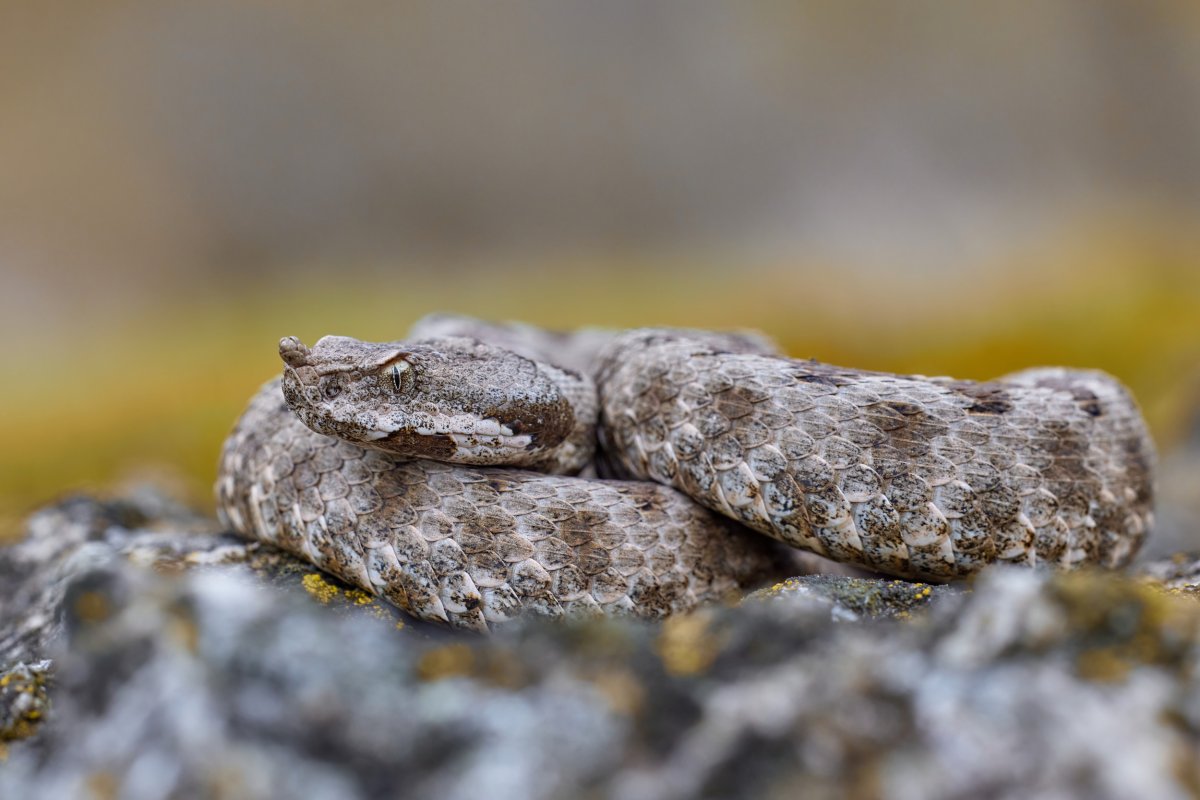A 6-year-old boy from Belgium has been hospitalized after being bitten by one of the most venomous snake species in Europe.
The boy was on vacation with his family in Croatia when he was bitten by a sand viper after he grabbed a branch that the snake was resting on in the Paklenica National Park, around 30 miles northeast of Zadar.
Sand vipers are one of Europe's few venomous snake species, and are also known as the horned viper, long-nosed viper or nose-horned viper. They are found across northern Italy and the Balkans, and are highly venomous, with their venom containing hemotoxins and neurotoxins.

"Thibaut wanted to play by the water," the boy's father, Alexander Spriet, told the Flemish newspaper Het Nieuwsblad. "He grabbed a branch to keep his balance. But he hadn't seen a snake lying on that branch. He cried out—he had bitten his finger.
"Thibaut was bleeding on his finger, but we didn't know at the time whether the bite was venomous or not," he said. "We had no coverage with our mobile phone. We immediately decided to return to the entrance: on arrival, I had seen a first aid station there."
Around 5.4 million snake bites are recorded each year, of which between 1.8 and 2.7 million are venomous, leading to around 100,000 deaths worldwide, according to the World Health Organization. In Croatia alone, around 5 in every 100,000 people are bitten by a snake each year, leading to around 2 deaths.

Children, due to their smaller size, are more at risk than adults when bitten by venomous snakes, meaning that they need to reach medical attention faster in order to save them. Thibaut's parents carried him as they rushed him to get medical aid at the first aid point, which was around 45 minutes walk away.
"In retrospect, it turned out to be the right choice. When you walk, your blood flows faster and the poison spreads faster," Spriet told Het Nieuwsblad.
In order to treat a snake bite, it helps immensely to know what species of snake was involved, as antivenom treatments are often specific to the type of snake. Luckily, the parents took a picture of the offending viper before they left the scene.

"In a reflex, I asked my wife to quickly take a picture of the one-meter-long snake," Spriet said. "When we showed the photo there, they looked dubious: the bite was very poisonous. They had never seen a child bitten by a sand viper."
Thibaut was then rushed to a hospital in Zadar in an ambulance.
"Because of the photo, they knew which antidote to administer. Only they did not immediately know what the dose for a child was. 'We hope we can save his life,' doctors said. When we had to wait after that, I expected a call with bad news any minute," Spriet said.
The anti-venom was given around two hours after the bite, thankfully saving the boy's life.

"It was like in a movie. The venom slowly spreads from where you were bitten. If it reaches your heart, it's fatal. With Thibaut it just stopped at the armpit," his father said.
Thibaut was kept in the hospital for several days to ensure that the venom didn't lead to kidney failure or thrombosis and to make incisions in his hands to relieve the pressure in his circulatory system.
"When that is healed, we should be able to leave normally," Spriet told Het Nieuwsblad.
Thibaut's parents urge others to take caution in the national park and to keep an eye out for venomous snakes like this one.
"We also never imagined that we would be confronted with such a dangerous snake in Croatia. Nowhere have we seen signs warning us about this."
Do you have a tip on a science story that Newsweek should be covering? Do you have a question about snake bites? Let us know via science@newsweek.com.
Uncommon Knowledge
Newsweek is committed to challenging conventional wisdom and finding connections in the search for common ground.
Newsweek is committed to challenging conventional wisdom and finding connections in the search for common ground.
About the writer
Jess Thomson is a Newsweek Science Reporter based in London UK. Her focus is reporting on science, technology and healthcare. ... Read more
To read how Newsweek uses AI as a newsroom tool, Click here.





